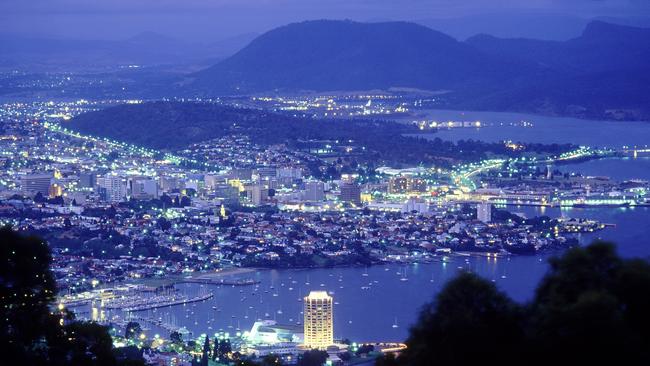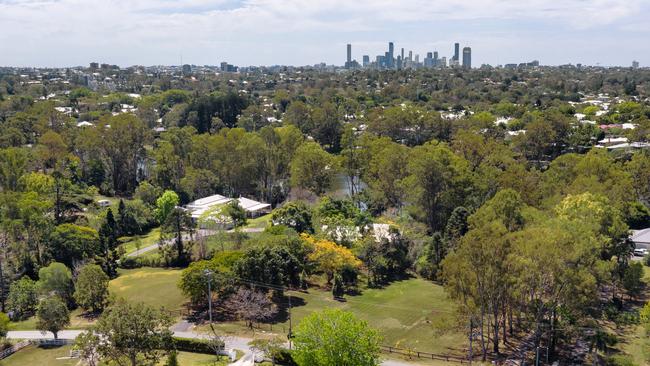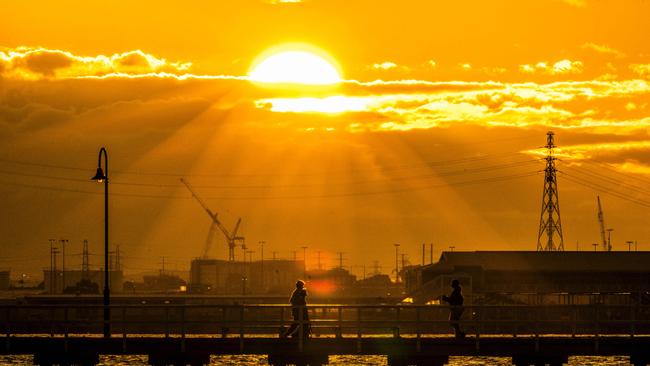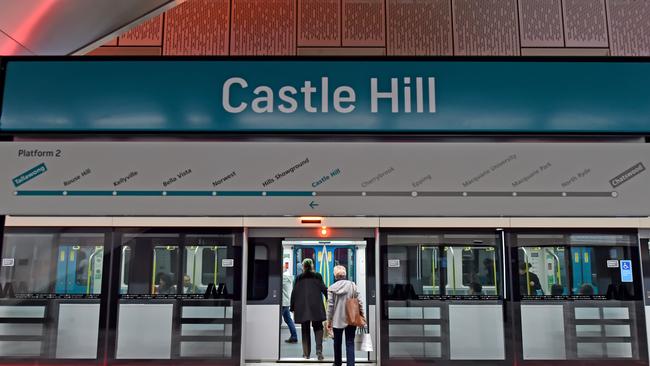From boomers to babies, these suburbs each have unique needs
Gen Z are taking over Canberra, while in one Sydney suburb half the residents are Baby Boomers. Watching population data can reveal where different areas will take off.

The world is in a constant state of flux, and nowhere is this more evident than in the shifting dynamics of its population.
People are not just living longer but also giving birth to new generations, which, in turn, shape the demographic landscape in unique and complex ways.
As the older generations age, and new ones emerge, governments, businesses, and societies at large must adapt to changing needs and preferences. From healthcare and education to workforce dynamics and retirement planning, each aspect of our lives is intricately linked to the age structure of our populations.
The Australian Bureau of Statistics tracks population growth annually by age groups across all suburbs and municipalities in Australia, with data typically reflecting the previous financial year. The most recent release, dated September 28, is for the year ending June 2022.
According to this data, the estimated Australian population as of June 2022 stands at 26 million.
Over the past five years, the total population has seen an increase of 1.4 million, representing a 6 per cent growth.
Exploring Australia’s generational composition is essential for businesses, particularly in the property sector, as it informs strategic planning for residential and commercial development.
Additionally, this insight guides the provision of commercial properties and services, aligning offerings with demographic preferences, from healthcare facilities for Baby Boomers to tech-focused spaces for Gen Z.
Due to the data’s availability only in five-year age groups, generations have been approximated for a more comprehensive view.
Gen Alpha
Generation Alpha, born after 2018, represents the first generation to experience their entire upbringing in the 21st century.
Presently, this demographic comprises about 1.5 million individuals aged between 0 and 4 years, accounting for 6 per cent of the total population.

Judging by the median age of mothers during their birth, they are most likely to be the children of Millennials and, as such, their settlement patterns often align with those of the Millennial generation.
Strathnarin in Canberra boasts the highest concentration of Gen Alphas, comprising 14 per cent of its population. It’s closely followed by Melbourne’s Tarneit-North and Cobblebank – Strathtulloh, where Gen Alphas make up 13 per cent of the population. Notably, all these suburbs are situated in the urban fringes, underscoring the prevailing trend among Millennials and their families.
Gen Z
Generation Z, encompassing those born between 2000 and 2017, spans from individuals in their early 20s to those still in their childhood and teenage years.
This generation is distinguished by its emphasis on education and career pursuits, heightened awareness of mental health issues, and a strong sense of environmental responsibility. In this analysis, we categorise individuals aged 5 to 24 as Gen Z.
As of 2022, this generation accounted for roughly one in four individuals, totalling approximately 6.4 million.

Notably, Gen Z experienced a substantial relative increase of 6 per cent, with the cohort expanding by about 304,000 individuals between 2017 and 2022.
Canberra saw the most remarkable growth rate at 14 per cent, trailed by Queensland at 6 per cent and Victoria at 5 per cent.
Canberra’s Acton and Duntroon has the highest proportion of resident Gen Z population at 89 per cent and 72 per cent respectively. This is due to the presence of Defence Academies in the area. This is followed by Brisbane’s St Lucia at 47 per cent and Melbourne’s Clayton (North) – Notting Hill at 46 per cent.
These trends suggest a rising demand for purpose-built student accommodations in university precincts, as both the urban fringes and city centres appear to attract an increasing number of students.
Gen Y: First home buyers
Millennials, often referred to as Gen Y, were born between 1982 and 1999, comprising about 5.6 million individuals, constituting 22 per cent of the total population.
Between 2017 and 2022, their numbers increased by about 242,000, reflecting a 4 per cent growth.
Tasmania witnessed the most remarkable growth rate among all states for this cohort, an astonishing 20 per cent, followed by Canberra at 12 per cent.
Millennials have played a pivotal role in driving population growth towards urban fringes in recent years. This is primarily due to the fact that Millennials, currently aged between 25 and 39, are entering family formation stages.

Older Millennials have started to have children, necessitating a move from their previous minimalist inner-city apartments to more spacious family-sized homes, which are typically more affordable and available in the urban fringes.
While suburbs surrounding the CBD regions of Sydney, Melbourne and Brisbane continue to host a higher proportion of Millennials compared to other generations, the significant growth of the Millennial demographic is primarily concentrated in the urban fringe areas.
Melbourne’s Clyde North, Tarneit, Cobblebank – Strathtulloh, Rockbank, and Sydney’s Box Hill – Nelson, Marsden Park – Shanes Park, and Schofields East have experienced remarkable growth, with the Millennial cohort increasing by at least 200 per cent in these areas. The challenge lies in developing adequate infrastructure to support these burgeoning suburbs on the city’s outskirts.
Ensuring efficient transportation and essential facilities is crucial to the success of these regions. Furthermore, these areas hold promising opportunities for small businesses and commercial properties.
Gen X: Upgraders
Gen X, born between 1964 and 1981, straddles the shift from analog to digital technology. Aged between 40 and 59, they constitute a substantial 25 per cent of the population, totalling 6.5 million, making them the largest cohort in Australia as of June 2022.
Their growth over the five years leading to 2022 was a modest 58,000, or 1 per cent, with Tasmania experiencing the highest increase for this group at 6 per cent, followed by Queensland at 4 per cent.
Known for their scepticism and advocacy for work-life balance, Gen X embraced alternative culture, prioritised financial responsibility, and often juggled the responsibilities of raising children while caring for ageing parents.

With most in their peak earning years, Gen Xers are currently focusing on property upgrades.
They are drawn to affluent suburbs with excellent school facilities for their children and convenient access to aged care facilities, making these locations highly sought-after destinations for this cohort.
The highest concentrations of Gen Xers can be found in Perth’s Iluka – Burns Beach at 35 per cent, Brisbane’s Fig Tree Pocket at 34 per cent, and Melbourne’s Port Melbourne at 32 per cent.
These areas are renowned for their opulent, mansion-like properties, making them ideal destinations for property upgraders within the Gen X demographic.
Baby boomers: Lifestyle seekers
Baby Boomers, born between 1944 and 1963, have redefined the concept of later life stages. Mostly aged between 60 and 74, they constitute 19 per cent of the population, totalling 4.8 million.
However, between 2017 and 2022, the number of Baby Boomers declined by 4 per cent, at about 520,000, with the most significant decrease observed in the Northern Territory, at 17 per cent, and Canberra, at 7 per cent.
Coming of age in a post-war society, they actively witnessed and contributed to transformative social and cultural movements.
Baby Boomers have reshaped the notion of retirement and life after the traditional working phase.

Younger Baby Boomers are drawn to seeking diverse lifestyles and experiences, with some of them shouldering caregiving responsibilities for both elderly parents and their own adult children.
Tea Gardens – Hawks Nest, located about two hours north of Sydney, has the highest proportion of Baby Boomers at 49 per cent, closely followed by Cooloola near the Sunshine Coast in Queensland, at 47 per cent.

In Victoria, Paynesville in the Gippsland lakes is the top choice for Baby Boomers, with 44 per cent of the population belonging to this generation.
These regions are particularly attractive for their emphasis on lifestyle living, areas catering to the preferences and desires of Baby Boomers seeking a fulfilling and relaxed way of life.
Pre-Boomers: Exploring retirement living
Born prior to 1943, also known as the Silent Generation, they were profoundly shaped by major historical events such as the Great Depression and World War II, instilling in them a conservative and prudent outlook on life.
Currently aged 80 and above, they represent 4 per cent of Australia’s total population, numbering 1.1 million.
Over the past five years until 2022, there has been a considerable 32 per cent decline in this cohort due to natural ageing.
Nonetheless, a significant portion of this generation still requires suitable housing in retirement and care facilities with the provision of essential services to cater to their daily living needs.
Approximately one in five residents in Sydney’s Castle Hill belongs to the Pre-Boomer generation.

Following closely, Canberra’s Page has a Pre-Boomer population of 14 per cent, while Brisbane’s Millbank – Avoca and Hobart’s Lindisfarne – Rose Bay both have a Pre-Boomer representation of 12 per cent each.
Current population projections show there will be a strong increase across all the generations over the next 10 years.
The needs and preferences of each generation, from Gen Alpha to Baby Boomers, offer valuable insights for tailoring services and amenities to cater to their unique requirements.
These trends not only reflect the evolving dynamics of our population but also present opportunities and challenges for various industries.
Hari Hara Priya Kannan is a data scientist at The Demographics Group







To join the conversation, please log in. Don't have an account? Register
Join the conversation, you are commenting as Logout